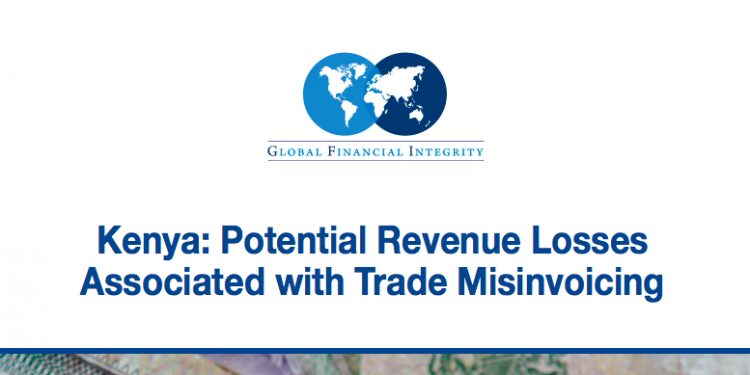Analysis of trade misinvoicing in Kenya in 2013 shows that the potential loss of revenue to the government was $907 million for the year, according to a new study by Global Financial Integrity. This amount represents eight per cent of the total annual government revenue as reported to the International Monetary Fund.
The report analyzes Kenya’s bilateral trade statistics for 2013 (the most recent year for which sufficient data are available) which are published by the United Nations (Comtrade). The detailed breakdown of bilateral Kenyan trade flows in Comtrade allowed for the computation of trade value gaps that are the basis for trade misinvoicing estimates. Import gaps represent the difference between the value of goods Kenya reports having imported from its partner countries and the corresponding export reports by Kenya’s trade partners. Export gaps represent the difference in value between what Kenya reports as having exported and what its partners report as imported.
Revenue lost due to the misinvoicing of imports was $767 million. This amount can be further divided into its component parts: uncollected VAT tax ($324 million), customs duties ($229 million), and corporate income tax ($214 million). Lost revenue due to misinvoiced exports was $140 million for the year which is related to lower than expected corporate income and royalties.
“The practice of trade misinvoicing has become normalized in many categories of international trade,” GFI President Raymond Baker said. “It is a major contributor to poverty, inequality, and insecurity in emerging market and developing economies. The social cost attendant to trade misinvoicing undermines sustainable growth in living standards and exacerbates inequities and social divisions, issues which are critical in Kenya today.”
Examination of the underlying commodity groups which comprise Kenya’s global trade show that a large amount of lost revenue ($92 million) was related to import under-invoicing of just five product types. Those products and the related estimated revenue losses include: mineral fuels ($15 million), electrical machinery ($17 million), vehicles ($18 million), cereals ($21 million), and worn clothing ($21 million). Lost revenue due to mispriced exports ($140 million) may be related to the coffee, tea and spice trade given this category of goods makes up over 90 per cent of all exports.
Trade misinvoicing occurs in four ways: under-invoicing of imports or exports, and over-invoicing of imports or exports. In the case of import under-invoicing, fewer VAT taxes and customs duties are collected due to the lower valuation of goods. When import over-invoicing occurs (i.e. when companies pay more than would normally be expected for a product), corporate revenues are lower and therefore less income tax is paid. In export under-invoicing, the exporting company collects less revenue than would be anticipated and therefore reports lower income. Thus, it pays less income tax. Corporate royalties are also lower.
Total misinvoicing gaps related to imports can be broken down by under-invoicing ($2 billion) and over-invoicing ($761 million). It should be noted that these figures represent the estimated value of the gap between what was reported by Kenya and its trading partners. The loss in government revenue is a subset of these amounts and is based on VAT tax rates (16 percent), customs duties (11.3 percent), corporate income taxes (28.1 percent), and royalties (0.1 percent) which are then applied to the value gap. Export misinvoicing gaps were $496 million for export under-invoicing and $341 million for export over-invoicing. Lost corporate income taxes and royalties are then applied to export under-invoicing amounts to calculate lost government revenue.




